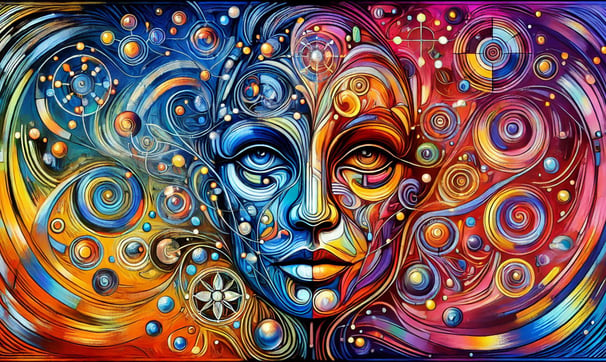Emotional Ai Art
AI WORLD


This article explores how emotional AI is reshaping artistic expression, the philosophical questions it raises, and its implications for the future of creativity.
Art has always been considered a deeply human endeavor, a reflection of emotions, thoughts, and the human experience. However, with the advent of artificial intelligence (AI), the boundaries of creativity are being challenged. Emotional AI, which is designed to recognize, interpret, and simulate human emotions, introduces a new dimension to the intersection of art and technology. This article explores how emotional AI is reshaping artistic expression, the philosophical questions it raises, and its implications for the future of creativity.
The Rise of Emotional AI in Art
Emotional AI refers to systems capable of understanding and emulating human emotions through data analysis and machine learning. These systems analyze facial expressions, voice tones, and other indicators to interpret emotions. In the realm of art, emotional AI can:
Generate Artworks: Emotional AI can create paintings, music, and literature that mimic human emotional depth. For instance, AI-generated paintings can evoke specific emotions by analyzing color theory and composition.
Enhance Audience Engagement: AI-driven installations can adapt to the emotions of viewers, creating immersive and personalized experiences.
Collaborate with Artists: Emotional AI can act as a creative partner, assisting artists in developing concepts or refining their work.
Case Studies: Emotional AI in Action
AIVA (Artificial Intelligence Virtual Artist): AIVA composes classical music by analyzing emotional patterns in existing compositions. It has created pieces that resonate with listeners on an emotional level, challenging the notion of musical authorship.
GAN Art: Generative Adversarial Networks (GANs) have produced artworks that blur the line between human and machine creativity. By integrating emotional data, these systems can generate pieces that provoke specific feelings.
Interactive Installations: AI-powered art exhibits respond to the emotions of viewers in real-time, creating a dynamic dialogue between the audience and the artwork.
The Philosophical Debate: Can AI Truly Create Art?
The integration of emotional AI into art raises profound philosophical questions. Art is traditionally viewed as an expression of the artist’s subjective experience. Can AI, lacking consciousness and genuine emotion, truly create art? Or is it merely simulating creativity?
Expression Without Experience: Emotional AI can replicate the external characteristics of emotion but lacks the subjective experience that defines human creativity. Critics argue that this makes AI-generated art inherently superficial.
The Role of Intent: Artistic intent is a key element of human creativity. While emotional AI can generate outputs based on algorithms, it does not possess intent or purpose beyond its programming.
Collaboration vs. Authorship: When artists collaborate with emotional AI, the line between creator and tool becomes blurred. Who should be credited for the resulting work?
Implications for Artists and Audiences
The rise of emotional AI in art has far-reaching implications:
For Artists: Emotional AI offers new tools for creativity, enabling artists to explore uncharted territories. However, it also challenges traditional notions of authorship and originality.
For Audiences: AI-generated art pushes viewers to reconsider their relationship with creativity. Can a machine-generated work evoke the same emotional resonance as a human-created piece?
For the Art Market: The commodification of AI-generated art has introduced a new category of collectibles, raising questions about value and authenticity.
Emotional AI and Accessibility
One of the most promising aspects of emotional AI in art is its potential to democratize creativity. By providing tools that require minimal technical skill, emotional AI can empower individuals from diverse backgrounds to express themselves artistically. For instance:
Music Composition: AI platforms can help novice musicians compose pieces that reflect their emotions.
Visual Art: Applications like DeepArt allow users to create AI-enhanced artworks by simply uploading an image.
Storytelling: Emotional AI tools can assist writers in crafting narratives that resonate with readers on a deeper level.
Ethical Considerations
The integration of emotional AI into art also brings ethical challenges:
Cultural Appropriation: AI systems trained on existing artworks may inadvertently replicate cultural biases or exploit intellectual property.
Authenticity: As AI-generated art becomes more sophisticated, distinguishing between human and machine-made works may become increasingly difficult, leading to debates about authenticity.
Emotional Manipulation: Emotional AI has the potential to manipulate viewers’ emotions, raising concerns about consent and agency.
The Future of Emotional AI in Art
As emotional AI continues to evolve, its role in art will likely expand. Future developments could include:
Hyper-Personalized Art: Systems capable of creating works tailored to an individual’s emotional profile.
Emotional Simulations: AI-driven experiences that simulate complex emotional journeys, blurring the line between art and therapy.
Cross-Cultural Creativity: Emotional AI could facilitate the creation of art that bridges cultural divides by interpreting and integrating diverse emotional perspectives.
Conclusion: Redefining Creativity
The emergence of emotional AI in art challenges traditional definitions of creativity and authorship. While machines cannot experience emotions in the same way humans do, their ability to simulate emotional depth opens new avenues for artistic expression. By collaborating with emotional AI, artists can push the boundaries of their craft, creating works that resonate with audiences in innovative ways.
Ultimately, emotional AI is not a replacement for human creativity but a tool that amplifies it. As we navigate this evolving landscape, the dialogue between humans and machines will continue to redefine what it means to create, feel, and connect through art.
